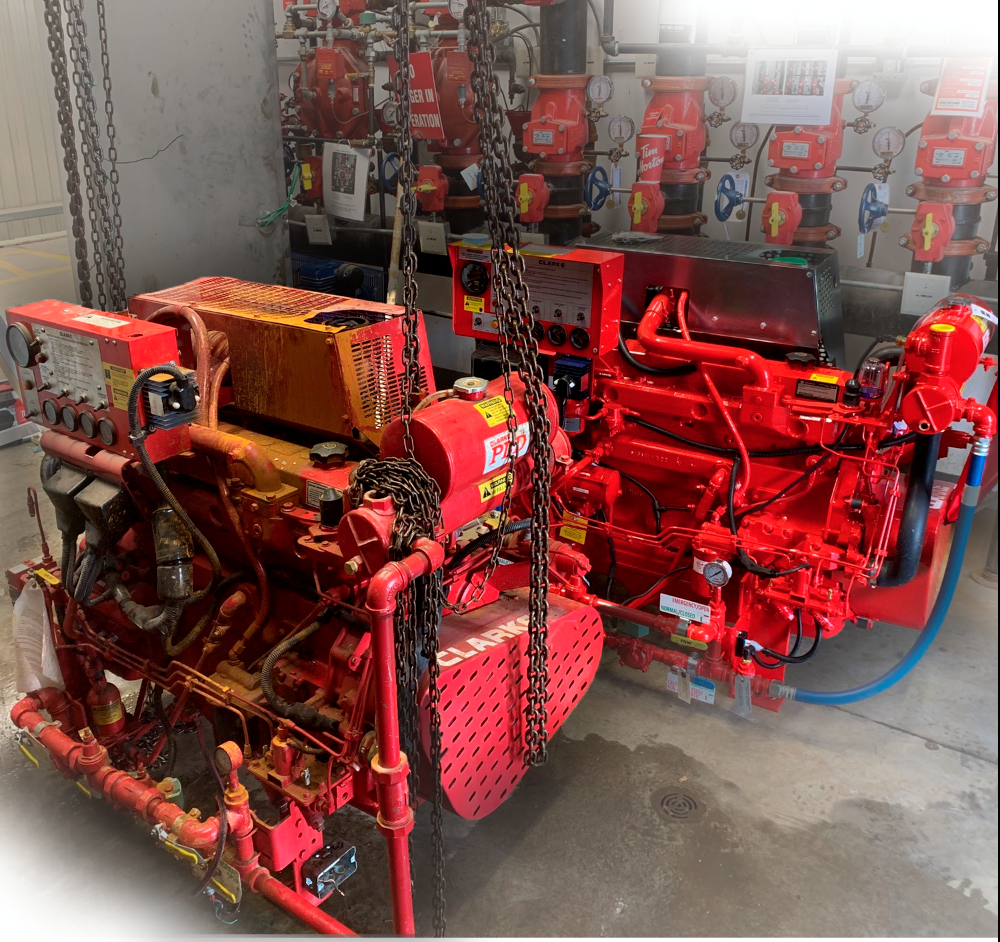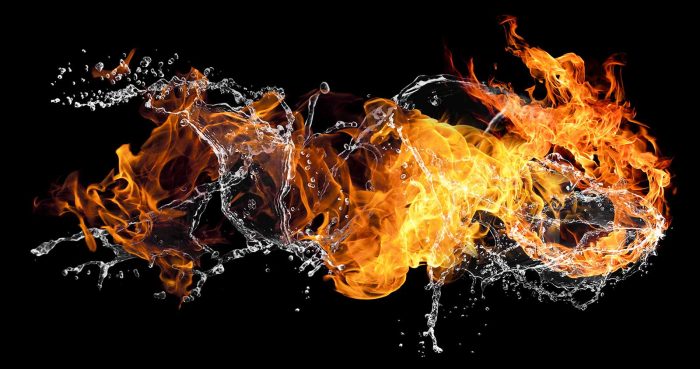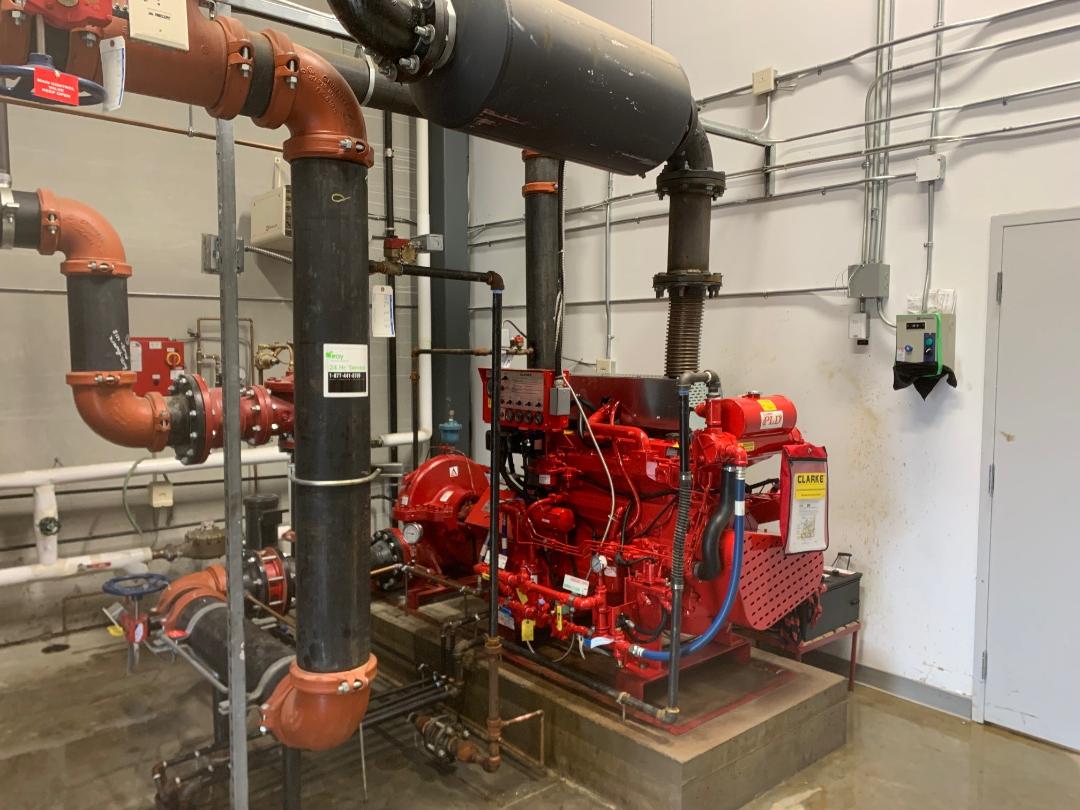Annual Fire Pump Flow Test

- We begin by attaching hoses to the discharge test header and running them to a safe location, where water flow will not cause any damage.
- Next, our Toronto fire pump specialists take pressure readings as the fire pump is run through its various stages.
- We accurately record and store the results.
- We then compare the test results against the factory specifications and previous test results.
- If we notice a significant reduction in the pump’s performance, we conduct further inspection and make necessary repairs.
NFPA 25 requires any fire pumps driven by an electric motor to be operated monthly.
- We turn on and run the fire pump for at least 10 minutes.
- Next, we take and record the readings on the suction and discharge pressure gauges.
- We check all the packing glands for any discharge.
- If necessary, our fire pump specialists adjust the gland nuts.
- As the pump is run, we also listen for any unusual noise or vibration.
- We check all the bearings, packing boxes, and pump casing for overheating.
- Finally, we record the fire pump starting pressure.
- Once the test is finished, we analyze all the above to determine whether further fire pump inspection is necessary.
Diesel-driven fire pumps should be run for a minimum of 30 minutes, to allow enough time for all running components to warm up and stabilize. This will drive off moisture and condensation, which can shorten the life of the engine components.
- Our Toronto fire pump specialists begin by recording the pressure at which the pump automatically starts.
- We then wait and observe how long it takes for the engine to crank and to reach running speed.
- At this time, we record the pump suction and discharge pressures.
- Next, we check the fuel tank levels and top them up if they are less than ⅔ full.
- We also check that all fuel links are locked open.
- Our fire pump service and inspection specialists check engine oil levels.
- We make sure that the battery and charger are operational.
- We confirm that the engine cooling systems are operational.
- Finally, we check that the engine gauges are functioning properly.

